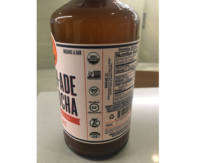Reimagining the traditional can

The number of beverage brands available on store shelves continues to grow, and such changes can increase the possibility of consumers facing difficulty in distinguishing one product from another – in fact, in 2014, it was announced that the soft drink market volume in Asia Pacific rose by 6.9% . As today’s consumers look for new means to express their identity and differentiate themselves from their peers, their purchase decisions for daily commodities such as food and beverage are factored in as well. In order to attract greater consumer attention, packaging has become a key tool for boosting brand loyalty, and is today one of the most important parts of a marketing campaign. Thanks to its visual appeal and close contact with the end-users, packaging can play a strong role in consumers’ daily lives. It is necessary therefore, for brands to address the design of new packaging carefully in order for it to have a lasting impact on buyers.
Regional Differences
A major challenge for food and beverage brands is also a simple one – how to market their products so that they stands out from the competition. Due to rapid urbanization and the rise of a middle class with higher disposable income in Southeast Asia, consumers’ lifestyles and demands are changing and they are more willing to spend on products that come in safe, reliable and innovative packaging.
In mature Asian markets such as Japan and Korea, metal packaging is today one of the most commonly found packaging formats on retail shelves, being both safe, portable and also durable. In fact, according to a Fuji Keizai Report from 2011, approximately 35.3% of beverages in Japan’s soft drink market were packaged in cans. At the same time, in Southeast Asia – with its hot climate – beverage cans are particularly appealing because the containers not only chill faster but also stay cool for a longer period of time.
Southeast Asia remains a key market for beverage packaging, thanks to the popularity of a wide variety of teas, fruit juices, beers and energy drinks. The demand for carbonated drinks and beers in particular continues to rise – in 2014, the Nikkei Asian Review reported that the soft drink market in Indonesia, Malaysia, Thailand, Philippines, Singapore and Vietnam was worth a combined $8.7 billion – up 50% from 10 years ago . Ready-To-Drink (RTD) teas, fruit juices and energy drinks are also proportionally increasing in demand compared to sodas, gaining in popularity with health-conscious urban consumers.
The scale and competition of the regional markets alone has lead to a greater need for brand owners to better differentiate their products. At the same time, with the region’s rapid urbanization and higher exposure to information, today’s Asian consumers have higher standards when making purchase decisions. Cost is no longer the sole concern, and instead they also seek convenience, safety and environmental friendliness in products and packaging.
Against this background, while the traditional 330ml beverage can has grown in popularity over recent years, there is now also an increased consumer preference for different can sizes and formats such as sleek-style packaging.
Size Matters
There are a number of reasons for the popularity of the aluminum can as a packaging format, including advantages such as being light-weight as well as being easy to transport and store. Cans also benefit from being a truly sustainable packaging solution, as aluminum is both 100% and infinitely recyclable. In Japan and Korea’s beverage market, smaller and slimmer 250ml cans have been popular for some time, and indeed are on occasions more preferred than the traditional 330ml cans. Today, the availability of different can sizes is providing a new set of packaging options and opportunities for brands in the Southeast Asian market as well.
This shift in preference towards slimmer cans is in part due to increasing consumer preference for premium-looking products that feature unique or differentiated packaging. Advanced printing and decorating options, such as Crown’s Soft Touch varnish or Pictoris™ high quality printing, can help demonstrate the premium image on the beverage cans. At the same time, however, the slimmer format – which can be perceived as a novelty offering - now creates a new factor to draw consumers’ attention at store shelves. The new packaging is also more ergonomic, featuring a user-friendly design that is more comfortable and convenient to grasp, allowing young and old consumers alike to handle their drinks more easily and safely. At the same time, the cans can help to create new drinking experiences for active consumers, being more portable and suited for activities such as hiking, camping, or attending music festivals and sports events.
Having a broader range of can sizes and styles available is an effective tool to help brands target new customer segments that may have very distinct needs and preferences. For example, for health-conscious consumer, sleek-style cans offer a better alternative to a full-sized drink container – not only does the slimmer appearance of the package promote a better image, but also it allows them to indulge their favorite drink without guilt as the can contains a smaller portion. With sleek or smaller can options, consumers are now able to choose the volume of product that they desire without having to waste any of the contents, and at the same time satisfy their preference for a healthier option.
Sleek-Style for the Emerging Market
One trend that is specific to markets in Southeast Asia, is the fact that with the increasing demand for more convenient and recyclable beverage packaging, drinks that are traditionally sold at street stalls are now also being packaged in aluminum cans as well. This is a phenomenon that can be observed across Southeast Asia countries, where drinks from street stalls are highly popular and widely enjoyed by local customers of all ages. Barley and sugar cane tea, for example, only used to be available from stalls that would brew it on the spot, but today they can easily be purchased in retail outlets as well. Consumers can now not only drink in the marketplaces, but they can also buy their favorite traditional drinks in supermarkets and convenience stores to enjoy at home or on-the-go.
Expanding from the range of traditional cans, sleek-style designs have recently been introduced to the Southeast Asian market. These cans are ideally suited for packaging carbonated drinks and fruit juices, and they also allow brands to promote products with eye-catching designs and a genuine novelty value. In order to meet the growing demand for alternate packaging styles in Asia, Crown was the first can-maker to manufacture sleek cans in the region; the company’s manufacturing plant in Nong Khae, Thailand started commercial production of 330ml sleek-style cans in June 2013. In order to better support beverage brands, Crown has widened its production range by converting one line in South Vietnam and another in Malaysia to produce sleek cans. Now, in September 2015, Crown is opening a second production line in the Nong Khae facility to further expand its capacity to produce these cans in the region.
Expanding the Opportunity
Product packaging remains of singular importance because it is the very first thing that consumers encounter at the point of purchase. This makes packaging a significant opportunity for brands to convey their values to consumers by promoting imagery and messaging right at the start. Among the many different types of product containers, metal cans also helps brands meet consumer demand for user-friendly packaging, while also serving as a 100% recyclable and sustainable solution, all while retaining its high product protection.
The growing popularity of sleek-style cans in Asia shows that consumers are receptive to – and actively looking for – packaging that is special and different. The availability of alternative beverage packaging formats and sizes gives brands the opportunity to target new customer segments, expand their regional market reach and better meet consumers’ needs.
Looking for a reprint of this article?
From high-res PDFs to custom plaques, order your copy today!






